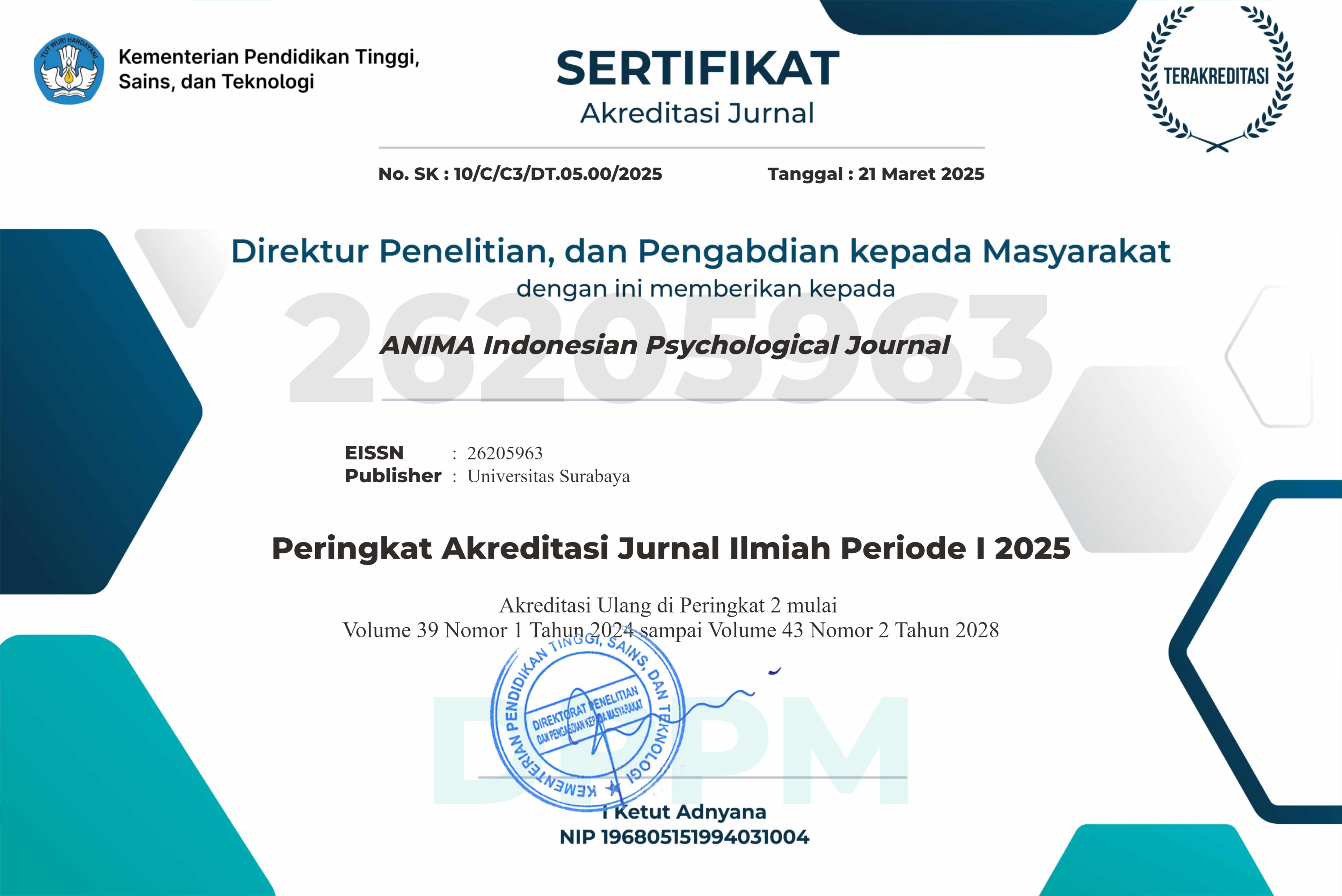Personality Profile Differences Between Prisoners and Non-Prisoners Using the Personality Inventory for DSM-5 (PID-5)
 Abstract Views:
720 times
Abstract Views:
720 times
 PDF - Full Text Downloads:
636 times
PDF - Full Text Downloads:
636 times
Abstract
Prison provides correctional function for prisoners. There are some factors needed to be considered to enable the correctional process work optimally, one of them is the personality of prisoners. We need to consider this because there are different kinds of prisoners with different criminal backgrounds. This study aimed to identify the personality profiles of prisoners, including violent offenders, non-violent offenders and drug offenders, using the Indonesian version of Personality Inventory for DSM-5 (PID-5). We compared the personality profiles of the prisoners’ groups with the non-prisoner’s group in order to have more accurate personality profiles. The samples consisted of groups of violent offenders (n = 96, mean age = 27.99 years old), non-violent offenders (n = 79, mean age = 35.55 years old), drug offenders (n = 180, mean age = 32.90 years old), and non-prisoners (n = 245, mean age = 23.31 years old). Analyses using a series of One-Way ANOVA at the level of domains and facets of personality showed differences in the personality profiles of the three groups of prisoners and non-prisoner. In comparison to the non-prisoner group, the drug offender group was found having the largest number of differences in the personality profiles, whilst the non-violent offender group had the least number of personality profile differences.
Downloads

This work is licensed under a Creative Commons Attribution-NonCommercial-ShareAlike 4.0 International License.
Articles published in ANIMA are licensed under a Creative Commons Attribution-NonCommercial-ShareAlike 4.0 International license. You are free to copy, transform, or redistribute articles for any lawful, non-commercial purpose in any medium, provided you give appropriate credit to ANIMA and the original Author(s), link to the license, indicate if changes were made, and redistribute any derivative work under the same license.
Copyright on articles is retained by the respective Author(s), without restrictions. A non-exclusive license is granted to ANIMA to publish the article and identify itself as its original publisher, along with the commercial right to include the article in a hardcopy issue for sale to libraries and individuals.
By publishing in ANIMA, Author(s) grant any third party the right to use their article to the extent provided by the Creative Commons Attribution-NonCommercial-ShareAlike 4.0 International license.

 DOI:
DOI:



